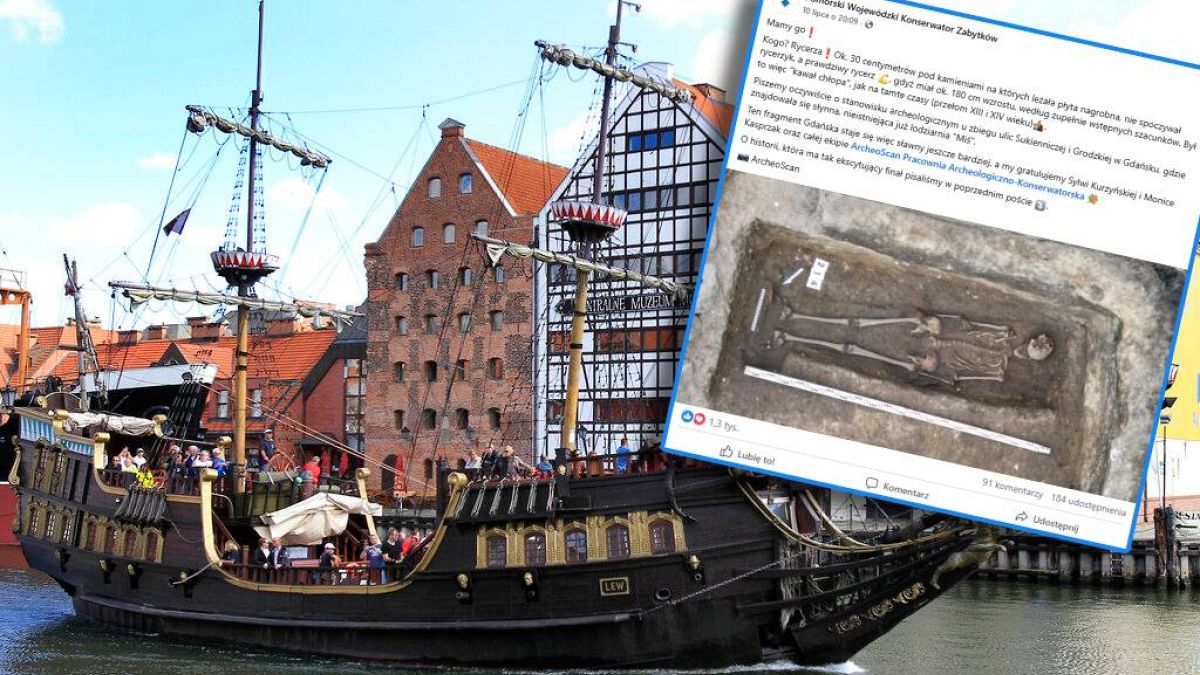

In a world filled with transitions and discoveries, intriguing narratives continue to unfold across the globe. From the depths of past centuries under the streets of Poland to waves gently lapping at the shores of Australia, and to the creative spaces where stories transform in Indian cinema, these stories offer us a gentle glimpse into the dynamic interactions between history, environment, and technology.
Beneath the former iconic ice cream parlour ‘Teddy’ in Gdańsk, Poland, lies a remarkable testament to the city’s rich medieval history. Archaeologists have discovered the skeleton of a knight, endearingly dubbed the ‘Gdańsk Lancelot’. This unexpected find beneath the layers of urban life speaks volumes about the intertwined narratives of past and present. The intimate glimpse into history not only stirs the imagination with thoughts of chivalry and knighthood but also enriches the cultural tapestry of Gdańsk. It is a poignant reminder of the stories etched into the very foundations of our cities, waiting patiently to be unearthed.
Meanwhile, in a proactive step towards preserving marine life and enhancing safety, the New South Wales government in Australia has initiated a trial to remove shark nets from selected beaches along the Sydney and Central Coast. This decision is met with enthusiasm by the scientific community which highlights the ineffectiveness of these nets in preventing shark bites. Described as akin to “a table tennis net on a soccer pitch,” these nets often endanger marine creatures rather than providing the intended protection. As gently rolling waves wash over these communities, there is a collective hope that this initiative will pave the way for both increased safety for beach-goers and a healthier marine ecosystem.
On a different front of storytelling, Indian cinema is undergoing a unique transformation with the rerelease of the 2013 romantic drama ‘Raanjhanaa’, known in Tamil as ‘Ambikapathy’. This film, originally set against the poignant backdrop of a doomed romance between a Hindu man and a Muslim woman, is receiving a fresh lease of life with an artificially crafted “happy ending”. While this move raises questions about creative integrity and the role of artificial intelligence in the arts, it also reflects the evolving landscape of film where technology meets tradition. The novelty of this rerelease opens space for dialogue about audience expectations and the preservation of directorial vision amidst the tides of innovation.
As each of these stories unfolds, they gently remind us of the diverse tapestries that shape our shared human experience. Whether found beneath layers of time, swimming in the ever-moving embrace of the ocean, or crafted anew through digital possibilities, these narratives offer a continuous dance between the past, present, and an ever-anticipatory future. As we embrace these tales, we find ourselves connected to the echoes of time and whispers of progress, navigating a world where stories both ancient and modern fold seamlessly into the gently flowing stream of human history.
Source: {link}
